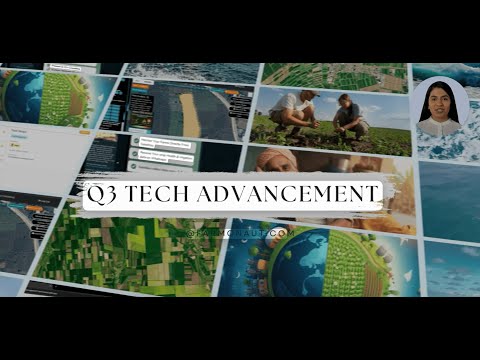Revolutionizing Higher Education in Pakistan: Innovative Industry-Academia Collaboration for Modern Skill Development
“London university’s industry-academia model increases graduate employability by up to 30% through direct student-industry collaboration.”
In today’s rapidly evolving global economy, the landscape of higher education is undergoing a transformative shift. We are witnessing the emergence of innovative university models that are reshaping the way academia and industry collaborate, creating exciting new pathways that bridge the gap between education and employment. These groundbreaking approaches are not just changing the face of higher education; they are revolutionizing the very essence of how we prepare the next generation for the challenges of the modern workforce.
Recently, a visit to a London university showcased an exemplary approach that integrates industry partnerships within academic frameworks, fostering direct student-industry collaboration. This model aims to equip graduates with skills that are perfectly aligned with modern job market demands, effectively transforming universities into dynamic hubs of innovation and creativity.
The Dawn of a New Era in Higher Education
On February 1, Ahsan Iqbal, the Federal Minister for Planning, Development, and Special Initiatives, embarked on a pivotal journey to Keele University’s Denis Coates Foundation Building and Business School in London. This visit was not just a mere formality; it was a deep dive into an innovative model that seamlessly integrates industry partnerships within the university’s academic framework.
The core objective of this approach is to foster direct collaboration between students and industry leaders, ensuring that graduates are armed with the skills necessary to meet current market demands. This visit marks a significant step towards reimagining the role of universities in Pakistan and beyond.

Breaking the Mold: Universities as Innovation Hubs
In a news release following the visit, Iqbal articulated a visionary perspective on the future of higher education. He emphasized the need for universities to transcend their traditional roles as mere brick-and-mortar educational institutions. Instead, he advocated for their evolution into dynamic hubs of innovation and creativity, where students can actively engage with the business world.
This paradigm shift is not just about changing the physical structure of universities; it’s about fundamentally altering the way we approach education. By facilitating this integration of academia and industry, educational institutions can offer students a more relevant and responsive learning experience that prepares them for the realities of the modern workplace.
The Call for Change: Implementing the Model in Pakistan
Recognizing the potential of this innovative approach, Iqbal made a compelling call to action. He urged the Member of Science and Technology to consider implementing a similar model in Pakistan. This initiative focuses on establishing robust partnerships with industry leaders to reform academic curricula and institutional practices across the country.
The intent behind this bold move is clear: to create a learning environment that not only imparts theoretical knowledge but also emphasizes practical skills and real-world experience. This is to be achieved through hands-on projects and mentorship opportunities from industry professionals, bridging the gap between classroom learning and workplace realities.
Bridging the Gap: Education Meets Employment
The initiatives proposed by Iqbal are designed to address a critical issue: the disconnect between education and employment. By aligning educational programs with industry needs, students would have better access to employment opportunities, and businesses would benefit from hiring graduates who possess the competencies and skills that are in high demand.
This approach is not just beneficial for students and businesses; it has the potential to drive significant economic growth. By producing graduates who are job-ready and equipped with the skills needed in the modern workforce, we can fuel innovation, boost productivity, and drive economic development across various sectors.
“Innovative university-industry partnerships can boost economic growth rates by 2-3% annually in developing countries like Pakistan.”
The Role of Technology in Revolutionizing Education
As we discuss the transformation of higher education, it’s crucial to highlight the role of technology in this revolution. Innovative companies like Farmonaut are at the forefront of integrating cutting-edge technology into traditional sectors, showcasing how industry and academia can collaborate to drive progress.
Farmonaut, a pioneering agricultural technology company, offers advanced, satellite-based farm management solutions via android, iOS, web/browser App, and API. While not directly involved in education, Farmonaut’s model of integrating innovative technology and data-driven insights into traditional practices aligns well with the ethos of modern, industry-integrated education.
For instance, Farmonaut’s use of satellite imagery, artificial intelligence, and blockchain technology in agriculture demonstrates the kind of innovative thinking and technological integration that universities should be exposing their students to. This approach to problem-solving and industry advancement is precisely what the new model of higher education aims to instill in students.
Comparative Analysis: Traditional vs. Innovative University Models
| Aspect | Traditional Model | Innovative Industry-Academia Model |
|---|---|---|
| Curriculum Design | Theory-focused, standardized | Industry-aligned, flexible, project-based |
| Skill Development | Primarily academic skills | Balanced academic and practical skills |
| Industry Engagement | Limited, often through internships only | Extensive, integrated throughout the curriculum |
| Graduate Employability | Variable, often requiring additional training | High, with job-ready skills and industry exposure |
| Innovation Focus | Research-oriented, often disconnected from industry needs | Applied research, solving real-world industry challenges |
Implementing the Vision: Challenges and Opportunities
While the vision of transforming higher education in Pakistan through industry-academia collaboration is compelling, its implementation comes with both challenges and opportunities. Let’s explore some key aspects:
- Curriculum Overhaul: Adapting curricula to align with industry needs requires significant effort and ongoing collaboration between academics and industry professionals.
- Faculty Development: Educators need to be upskilled to effectively deliver industry-relevant content and mentor students in practical applications.
- Infrastructure Investment: Universities may need to invest in new technologies and facilities to support hands-on learning and industry collaboration.
- Industry Commitment: Success depends on sustained engagement from industry partners in curriculum design, project mentorship, and internship opportunities.
- Cultural Shift: Both academia and industry need to embrace a culture of continuous learning and adaptation to keep pace with rapidly evolving market needs.
The Impact on Economic Development
The transformation of higher education institutions into collaborative environments that prioritize innovation and industry engagement has far-reaching implications for economic development in Pakistan. By producing graduates who are not only academically proficient but also equipped with practical skills and industry exposure, we can expect:
- Increased Productivity: Graduates entering the workforce with relevant skills can contribute more effectively from day one, boosting overall productivity.
- Innovation Boost: Closer ties between academia and industry can accelerate the pace of innovation, leading to new products, services, and solutions.
- Attracting Foreign Investment: A skilled workforce aligned with industry needs can make Pakistan more attractive to foreign investors, potentially leading to increased FDI.
- Entrepreneurship Growth: Exposure to industry practices and challenges can inspire more graduates to start their own ventures, fostering a culture of entrepreneurship.
- Reduced Skills Gap: By aligning education with industry needs, we can address the skills gap that often hinders economic growth and competitiveness.
Learning from Global Best Practices
As Pakistan embarks on this transformative journey in higher education, it’s crucial to learn from successful models around the world. Here are some global best practices that could inform the implementation of industry-academia collaboration in Pakistan:
- Germany’s Dual Education System: Combines apprenticeships in a company with vocational education at a vocational school in a single course.
- Singapore’s SkillsFuture Initiative: A national movement to provide Singaporeans with opportunities for lifelong learning and skills development.
- Israel’s Innovation Ecosystem: Close collaboration between universities, government, and industry has made Israel a global innovation hub.
- Finland’s Open Innovation Platforms: Universities act as open innovation platforms, bringing together students, researchers, and companies to solve real-world challenges.

The Role of Technology in Modern Education
In the context of revolutionizing higher education, it’s important to highlight how technology is reshaping the learning landscape. While Farmonaut’s focus is on agricultural technology, its innovative approach serves as an excellent example of how technology can be integrated into traditional sectors to drive progress and efficiency.
Farmonaut’s use of satellite imagery, AI, and blockchain in agriculture demonstrates the kind of technological integration that universities should be exposing their students to. This approach to problem-solving and industry advancement is precisely what the new model of higher education aims to instill in students.
Some key technological advancements that could be incorporated into the new educational model include:
- Artificial Intelligence and Machine Learning: For personalized learning experiences and data-driven decision making in education.
- Virtual and Augmented Reality: To provide immersive learning experiences and practical training in a safe environment.
- Blockchain: For secure and transparent record-keeping of academic credentials and achievements.
- Big Data Analytics: To gain insights into student performance, learning patterns, and industry trends.
- Internet of Things (IoT): For creating smart campuses and enhancing the overall learning experience.
The Future of Work and Education
As we look towards the future, it’s clear that the relationship between education and work is evolving rapidly. The industry-academia collaboration model is not just about preparing students for today’s jobs, but also about equipping them with the skills and mindset to adapt to the jobs of tomorrow. Here are some key considerations:
- Lifelong Learning: The concept of education as a one-time event is outdated. The new model should instill a culture of continuous learning and upskilling.
- Soft Skills Development: While technical skills are crucial, soft skills like critical thinking, creativity, and emotional intelligence are becoming increasingly important in the workplace.
- Entrepreneurial Mindset: Encouraging students to think like entrepreneurs, regardless of their career path, can foster innovation and adaptability.
- Global Perspective: In an interconnected world, providing students with a global perspective and cross-cultural competencies is essential.
- Ethical Considerations: As technology advances, it’s crucial to integrate ethical considerations and responsible innovation into the curriculum.
Implementing the Vision: A Roadmap for Pakistan
To successfully implement this innovative industry-academia collaboration model in Pakistan, a structured approach is necessary. Here’s a proposed roadmap:
- Assessment and Planning: Conduct a comprehensive assessment of current higher education practices and industry needs in Pakistan.
- Stakeholder Engagement: Bring together government officials, university leaders, industry representatives, and students to co-create the new model.
- Pilot Programs: Launch pilot programs in select universities, focusing on industries crucial to Pakistan’s economic growth.
- Curriculum Redesign: Work with industry experts to redesign curricula, incorporating project-based learning and real-world problem-solving.
- Faculty Development: Invest in training programs for faculty to equip them with industry-relevant knowledge and pedagogical skills.
- Infrastructure Development: Upgrade university facilities to support the new learning model, including technology labs and collaborative spaces.
- Industry Partnerships: Establish formal partnerships with key industries for internships, mentorship programs, and collaborative research projects.
- Monitoring and Evaluation: Implement robust systems to monitor the effectiveness of the new model and make data-driven improvements.
- Scaling Up: Based on the success of pilot programs, scale the model across more universities and disciplines in Pakistan.
The Role of Government and Policy
The success of this transformative initiative heavily depends on supportive government policies and regulatory frameworks. Here are some key areas where government intervention can make a significant impact:
- Funding and Incentives: Allocate dedicated funding for universities to implement industry-academia collaboration programs. Offer tax incentives to companies that actively participate in these initiatives.
- Regulatory Framework: Develop flexible accreditation standards that allow for innovative curriculum designs and industry involvement without compromising academic quality.
- National Skills Strategy: Align the industry-academia collaboration model with a broader national skills strategy to ensure coherence across education, workforce development, and economic policies.
- International Partnerships: Facilitate partnerships with international universities and companies to bring global best practices to Pakistan’s higher education system.
- Data Infrastructure: Invest in robust data collection and analysis systems to track the outcomes of the new model and inform continuous improvement.
Challenges and Mitigation Strategies
While the potential benefits of this innovative approach are significant, it’s important to acknowledge and address potential challenges:
- Resistance to Change: Both academia and industry may resist significant changes to established practices.
Mitigation: Implement change management strategies, including clear communication of benefits and involvement of stakeholders in the planning process. - Resource Constraints: Implementing new models may strain existing resources in universities.
Mitigation: Seek public-private partnerships and phased implementation to distribute costs over time. - Balancing Academic Rigor and Practical Skills: There may be concerns about maintaining academic standards while focusing on practical skills.
Mitigation: Develop integrated curricula that combine theoretical foundations with practical applications. - Keeping Pace with Rapid Industry Changes: Ensuring curricula remain relevant in fast-evolving industries.
Mitigation: Establish agile curriculum review processes and continuous dialogue with industry partners. - Equity and Access: Ensuring that the benefits of industry collaboration reach all students, not just those in elite institutions.
Mitigation: Develop inclusive policies and programs that extend opportunities to a diverse range of institutions and students.
Measuring Success: Key Performance Indicators
To ensure the effectiveness of this new model, it’s crucial to establish clear metrics for success. Here are some key performance indicators (KPIs) that could be used to measure the impact of industry-academia collaboration:
- Graduate Employment Rate: Percentage of graduates employed in their field of study within 6 months of graduation.
- Industry Satisfaction: Surveys of employers to assess satisfaction with graduates’ skills and job readiness.
- Research Commercialization: Number of patents filed, startups launched, and research projects commercialized.
- Student Satisfaction: Surveys of students and alumni to gauge satisfaction with the relevance and quality of their education.
- Industry Engagement Metrics: Number of industry partnerships, internships, and collaborative projects.
- Economic Impact: Contribution to GDP growth and sector-specific productivity improvements.
Conclusion: A Vision for Pakistan’s Educational Future
The visit of Ahsan Iqbal to Keele University marks a pivotal moment in Pakistan’s journey towards educational transformation. By embracing innovative models of industry-academia collaboration, Pakistan has the opportunity to reshape its educational landscape, ultimately paving the way for stronger economic growth and a more skilled workforce.
This new approach to higher education is not just about changing curricula or introducing new technologies. It’s about fundamentally rethinking the role of universities in society and the economy. It’s about creating a dynamic, responsive educational ecosystem that prepares students not just for the jobs of today, but for the challenges and opportunities of tomorrow.
As we move forward, it’s crucial that all stakeholders – government, academia, industry, and students – work together to bring this vision to life. With commitment, innovation, and a shared vision for the future, Pakistan can position itself as a leader in modern, industry-aligned higher education, driving economic growth and creating opportunities for its young population.
The journey ahead may be challenging, but the potential rewards – a thriving economy, a skilled workforce, and a culture of innovation – make it a journey worth undertaking. As we embark on this transformative path, we look forward to seeing Pakistan’s universities become true hubs of innovation, creativity, and economic growth, preparing the next generation to lead in the global knowledge economy.
FAQ Section
Q1: What is the main goal of the industry-academia collaboration model?
A1: The main goal is to bridge the gap between education and employment by equipping graduates with skills aligned to modern job market demands, transforming universities into hubs of innovation and creativity.
Q2: How does this model differ from traditional university education?
A2: This model integrates industry partnerships within academic frameworks, focusing on practical skills, real-world projects, and direct collaboration with industry professionals, unlike the primarily theory-focused traditional approach.
Q3: What role does technology play in this new educational model?
A3: Technology plays a crucial role, from providing advanced learning tools to exposing students to cutting-edge industry practices. It enables personalized learning, virtual experiences, and prepares students for tech-driven workplaces.
Q4: How can Pakistan implement this model in its universities?
A4: Implementation involves curriculum reform, establishing industry partnerships, faculty development, infrastructure upgrades, and creating a supportive policy environment. It requires collaboration between government, universities, and industry partners.
Q5: What are the potential economic benefits of this educational transformation?
A5: The potential benefits include increased graduate employability, boosted economic growth rates, enhanced innovation and entrepreneurship, and improved attractiveness for foreign investment in Pakistan.
Earn With Farmonaut: Affiliate Program
Earn 20% recurring commission with Farmonaut’s affiliate program by sharing your promo code and helping farmers save 10%. Onboard 10 Elite farmers monthly to earn a minimum of $148,000 annually—start now and grow your income!







